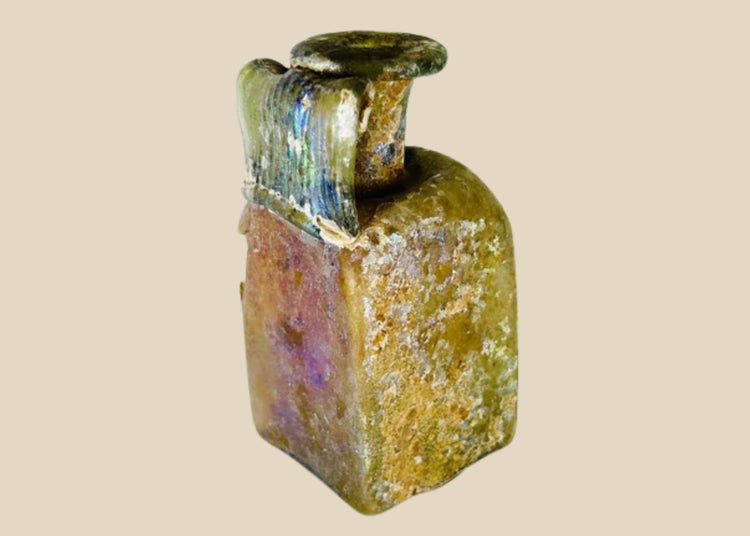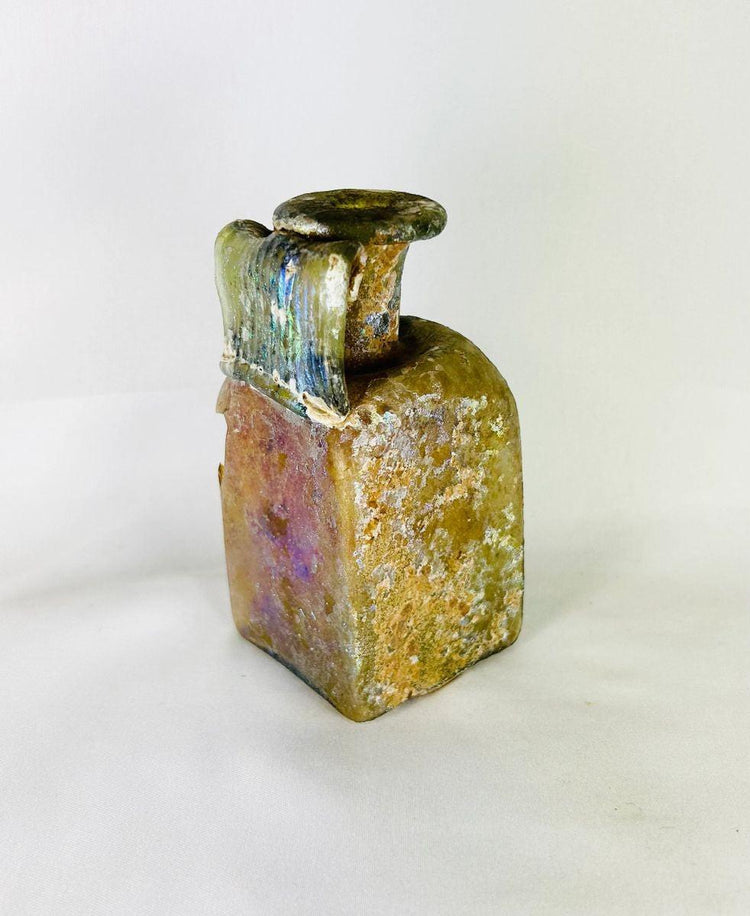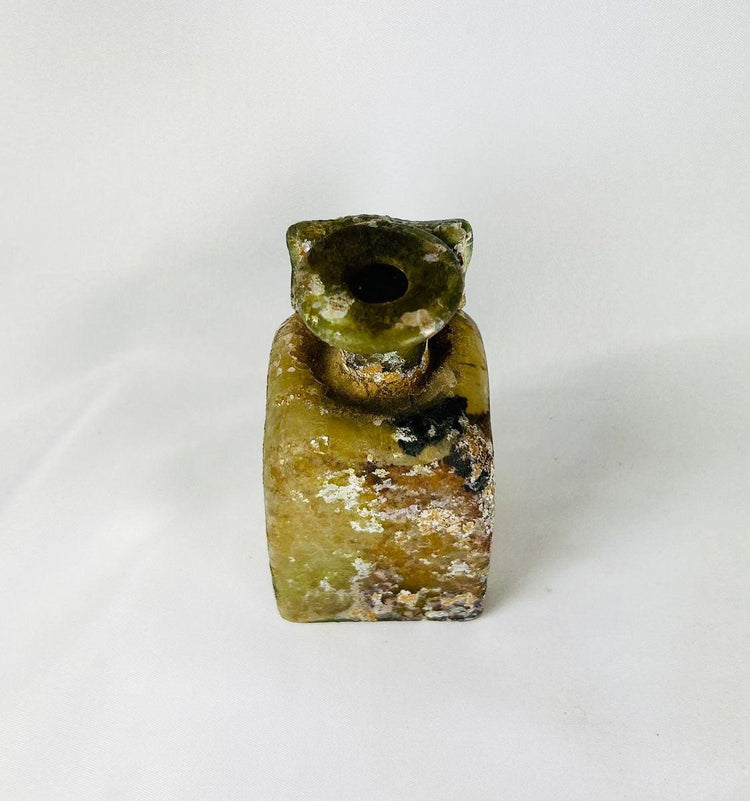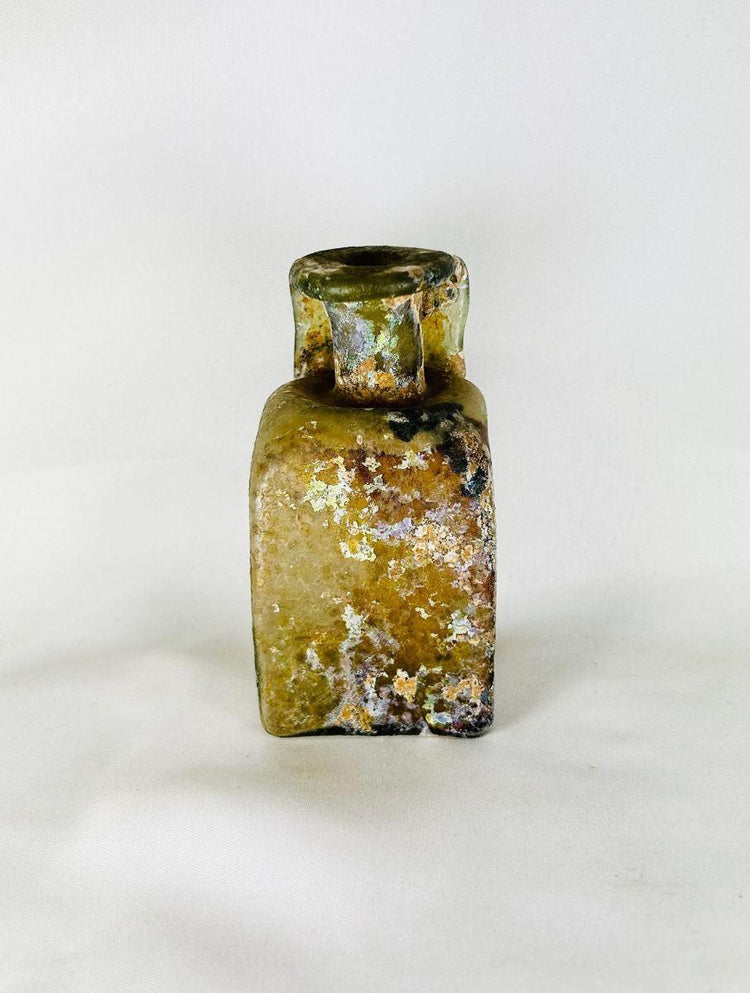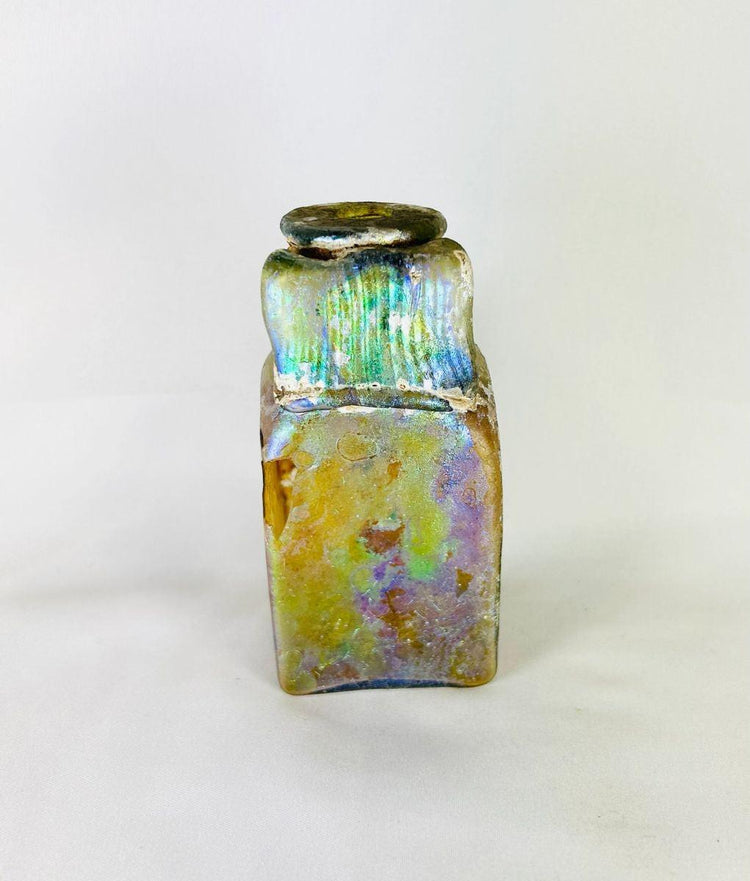Early Imperial Roman Glass | Square Mold-Blown Bottle with Possible Maker’s Mark | 1st Century CE
Description
More
Less
Historical Context & Origin
Region: Northwestern Roman Empire (likely Rhineland)
Material: Mold-blown translucent glass
Period: Early Imperial Rome, 1st Century CE
Description
This early Roman glass bottle is a superb example of 1st-century glassblowing innovation. Mold-blown in translucent glass, the vessel features a square body with sharply defined corners, a cylindrical neck with flaring mouth, and an inward-folded rim for controlled pouring. A distinctive wide ribbed “celery handle” extends from the neck to the shoulder, a hallmark of early Roman forms. The flat, slightly indented base bears a crosswise four-leaf maker’s mark, linking the vessel to a Roman workshop tradition of branded production.
Features
- Square mold-blown body with straight walls for efficient storage and transport
- Cylindrical neck and folded flaring rim designed for pouring and sealing
- Distinctive wide ribbed “celery handle” applied at the shoulder
- Base stamped with four-leaf possible maker’s mark, identifying workshop origin
- Developed iridescent patina from centuries of age
Cultural Significance
Roman glassmaking revolutionized vessel production, replacing heavier ceramic and metal containers with lightweight, durable, and elegant glass. Bottles like this were essential in trade and daily life, holding oils, perfumes, medicines, or wine. The square design not only allowed easy stacking but also reflects Roman ingenuity in marrying function with refined aesthetics. Workshop marks emphasized the organization of craft and trade across the Empire, highlighting the Rhineland as a major hub of glass production.
Condition
Excellent preservation with intact form, crisp mold-blown edges, and visible base mark. Natural iridescence and surface weathering highlight its age while enhancing its beauty.
Dimensions (approximate)
Height: 4 in
Width: 2 in
Depth: 2 in
Age
1st Century CE
Description
Historical Context & Origin
Region: Northwestern Roman Empire (likely Rhineland)
Material: Mold-blown translucent glass
Period: Early Imperial Rome, 1st Century CE
Description
This early Roman glass bottle is a superb example of 1st-century glassblowing innovation. Mold-blown in translucent glass, the vessel features a square body with sharply defined corners, a cylindrical neck with flaring mouth, and an inward-folded rim for controlled pouring. A distinctive wide ribbed “celery handle” extends from the neck to the shoulder, a hallmark of early Roman forms. The flat, slightly indented base bears a crosswise four-leaf maker’s mark, linking the vessel to a Roman workshop tradition of branded production.
Features
- Square mold-blown body with straight walls for efficient storage and transport
- Cylindrical neck and folded flaring rim designed for pouring and sealing
- Distinctive wide ribbed “celery handle” applied at the shoulder
- Base stamped with four-leaf possible maker’s mark, identifying workshop origin
- Developed iridescent patina from centuries of age
Cultural Significance
Roman glassmaking revolutionized vessel production, replacing heavier ceramic and metal containers with lightweight, durable, and elegant glass. Bottles like this were essential in trade and daily life, holding oils, perfumes, medicines, or wine. The square design not only allowed easy stacking but also reflects Roman ingenuity in marrying function with refined aesthetics. Workshop marks emphasized the organization of craft and trade across the Empire, highlighting the Rhineland as a major hub of glass production.
Condition
Excellent preservation with intact form, crisp mold-blown edges, and visible base mark. Natural iridescence and surface weathering highlight its age while enhancing its beauty.
Dimensions (approximate)
Height: 4 in
Width: 2 in
Depth: 2 in
Age
1st Century CE
You May Also Like
























